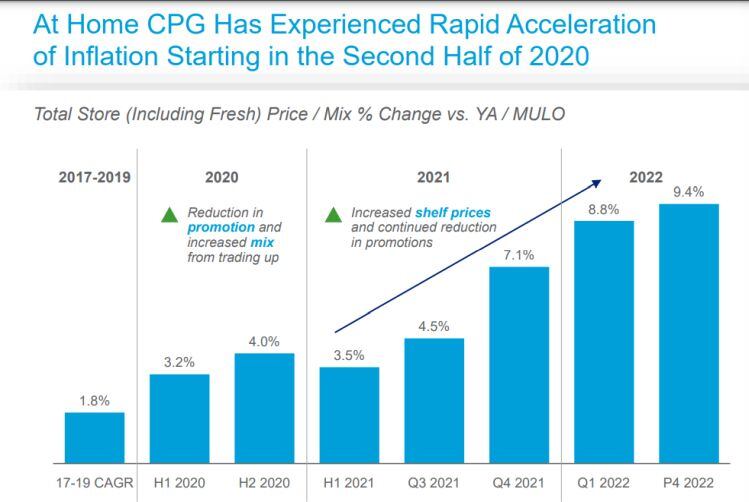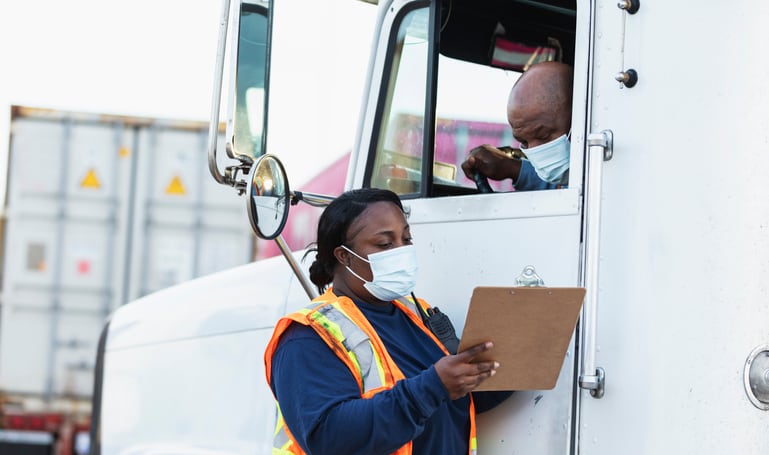With food inflation up double digits and predicted to climb higher, Walmart CFO Brett Biggs told analysts during the retailer’s first quarter earnings call this morning that both the average ticket and transaction count in stores increased slightly in the first three months of the fiscal year compared to a year ago.
And while this helped bolster Walmart’s market share in grocery and drive-up segment sales in the low double-digit range, he added that he was concerned that units per basket are dropping and that some consumers are trading down to smaller pack sizes, for example buying a half gallon of milk instead of a gallon, or opting for less expensive private label options in categories including deli, lunch meat, bacon and diary.
“Our team and our suppliers need to do everything we can do to keep costs low so that we can have values for our customers that are meaningful. That’s the purpose of the company,” Biggs said.
Noting that Walmart is “positioned to do well in great economies and in economies that aren’t as good,” he added that the retailer had an obligation to “take care of our customers going forward,” which means “our teams and our suppliers both need to do more to help customers out.”
This includes improving the price gaps between what Walmart and competing retailers charge for essential food categories, including dairy and protein, he said.
“Where we see the switching from brands to private brands … we’ve got to all work harder to keep prices low for the American consumer,” Biggs said.
To that end, he said, Walmart will “partner with suppliers on the food and consumables side this spring to try and bring those costs down.”
He added he is particularly interested in lowering the opening price point for food items to help lower income families afford to feed their families as inflation continues to rise and stimulus funds previously offered by the US government run out – forcing more shoppers to dip into savings.
To offset potentially tighter margins in the food segment, the company is planning rollbacks across other portions of the store, including apparel, where margins are not as tight to begin with in the hope of lifting overall basket sizes.
No plans to trim shelf space for national brands
Even as Walmart tracks an uptick in private label food and beverage purchases, executives do not plan to increase the volume of private label products at the expense of shelf space for branded goods.
CEO Doug McMillon explained that Walmart serves a range of consumers across a variety of platforms and their needs and expectations differ. So, while some lower income shoppers may be buying more private label to keep the overall price of their basket down, other shoppers continue to look for the national brands they prefer and Walmart needs to meet all of their needs.
“We just have such a broad range of offerings that we can serve all consumers well. And if consumers buy more of one than the other, we will replenish it that way,” so that we can continue to serve the full spectrum of shoppers, he said.
Full year looks bright, despite rough start
The subtle shift in Walmart’s pricing strategy comes at a time when the retailer already is struggling to meet profit expectations and reported net income fell nearly 25% in the first quarter to $2.05b compared to the same time last year.
Adjusted earnings per share also missed the forecast coming in at $1.30 rather than an anticipated $1.48, according to FactSet.
Operating income also dropped 23% to $5.3bn. This was partly due to divestitures worth about $300m, but it also reflects higher than expected wage expenses, higher than necessary inventory and increased fuel costs across the supply chain, McMillon told investors.
He explained that the company is taking action on all three items and as it is still just the first quarter of the year expects to make a full recovery so that the retailer can still deliver previously stated results for the full year.




